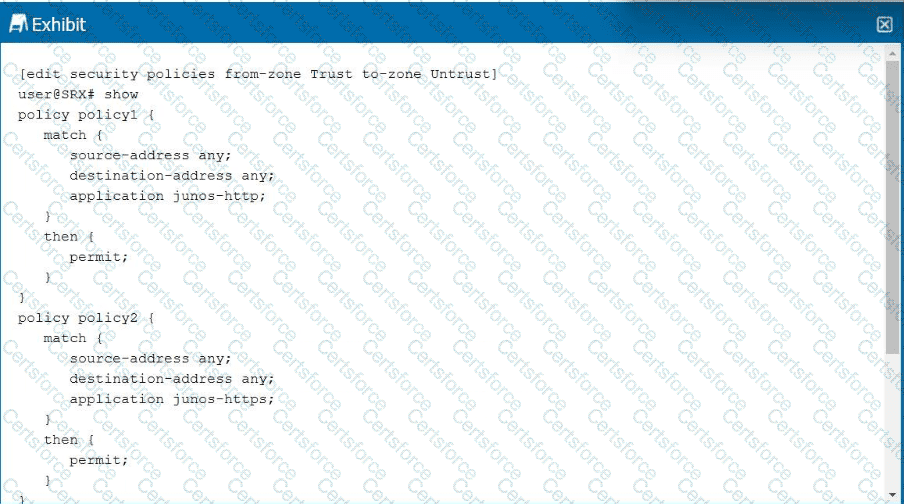Which two statements about the null zone on an SRX Series Firewall are correct? (Choose two.)
Which two criteria would be used for matching in security policies? (Choose two.)
Which two statements are true about the NextGen Web Filtering (NGWF) feature on an SRX Series device? (Choose two.)
Click the Exhibit button.


Referring to the exhibit, which statement is correct?
What is transit traffic in the Junos OS?
Which two security policies are installed by default on SRX 300 Series Firewalls? (Choose two.)
Which two statements are correct about security zones? (Choose two.)
Which statement is correct about capturing transit packets on an SRX Series Firewall?
Which two statements about management functional zones are correct? (Choose two.)